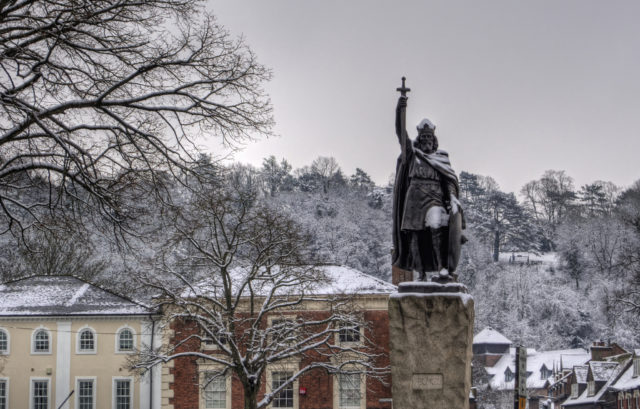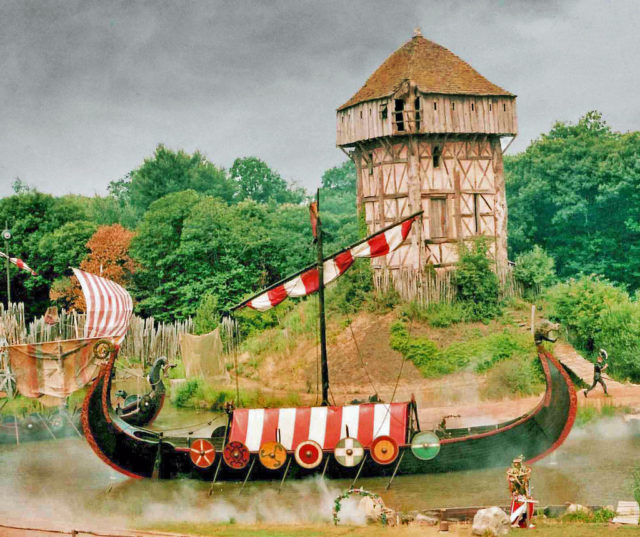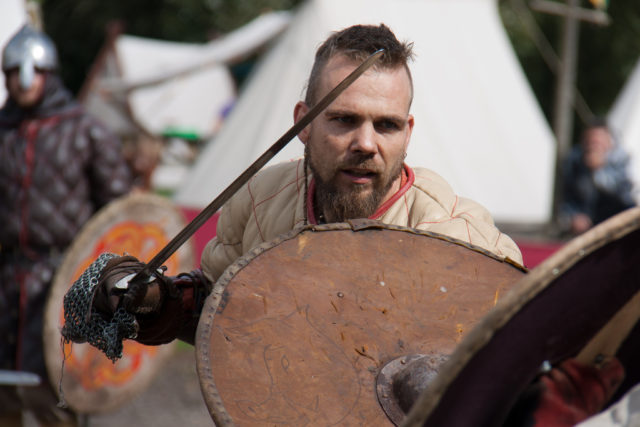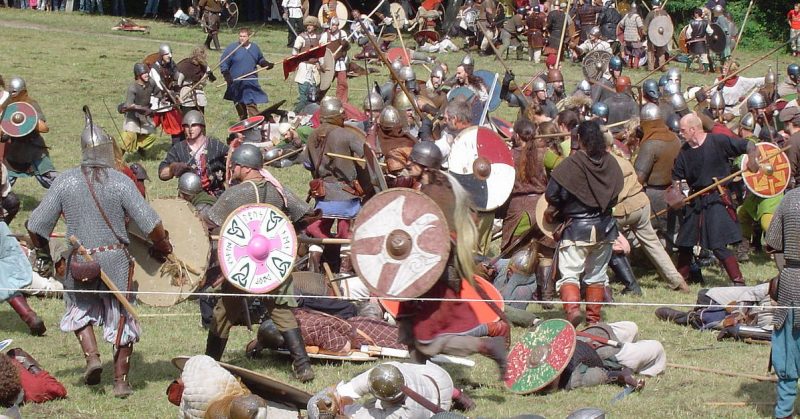The most powerful and devastating series of Vikings raids to hit Western Europe came between 865 and 896 AD. During these decades, a massive combined force of Scandinavian raiders hit England and Frankia, causing such destruction that they became known on both sides of the English Channel as the Great Army.
A New Viking Tactic
865 didn’t just mark the beginning of an intense period of Viking raids. It also saw the introduction of new tactics.
Previous Viking raids had generally used hit and run tactics. Whether roaming the coasts in their longships, sailing up great rivers, or marching inland, they kept moving. It was a strategy that allowed them to take the richest plunder from across a territory while being difficult to fight.
The Great Army found another way of minimizing risk while maximizing profits. Marching inland, they would take control of a significant town and make this their base. The places they chose usually had fortifications behind which the Vikings could shelter, whether the earthen walls of the period or older Roman defenses. When they didn’t, as at Reading, the Great Army improvised defenses using the surrounding terrain.
From these bases, the Great Army set out on horseback to raid the surrounding area. The periodic arrival of fresh troops kept them well supplied with soldiers.
At times, the Great Army grew even more ambitious, installing puppet rulers in East Anglia, Mercia, and Northumbria.

The Great Army Versus Alfred the Great
The greatest Viking army ran up against Britain’s most famous defender of the time: King Alfred the Great, ruler of Wessex.
While other English kings failed to fend off the invaders, Alfred brought a combination of tactical acuity and relentless persistence to the fight. Even at the worst of times, he stuck to this. He contained the raiders in their bases at Wareham (875-6), Exeter (876-7), and Chippenham (878), minimizing their ability to gather the spoils from the surrounding settlements and countryside. At Edington in 878, he defeated the Great Army in battle.
Alfred’s success was not all military. Like other rulers, he was willing to make peace with the invaders when necessary, and probably to pay tribute as others had. His consistency of purpose was seen in the long term, as he drove the Vikings back by whatever means he could.
Much as the Great Army had relied on fortified towns for their raiding, Alfred used them to halt the raids. He established a system of burghs, fortified towns where local people were responsible for building, maintaining, and manning the defenses. These burghs made it harder for the Vikings to gain a foothold in Wessex.
By 878, men’s departures home with their booty were weakening the Great Army. Many replacements had arrived late or been lost at sea. With Alfred in the ascendant, it was time to move on.

Opportunism in Frankia
Across the Channel from southeast Wessex, Frankia had seldom been the target of Viking raids in the decades before the Great Army formed. Prosperous monasteries and towns there lay mostly defenseless, never having had to fortify against the Raiders. They were still rich with plunder. Following the deaths of two experienced rulers in the form of Louis the German (died 876) and Charles the Bald (died 877), a series of short-lived and inexperienced Kings took over the separate kingdoms of West Frankia and East Frankia.
Frankia was ripe for the picking.
In 879, the Great Army arrived in central Frankia and the Vikings began systematically raiding everything they could, just as they had in England. A combined effort by the East and West Franks the following year failed to trap the Vikings, and the two kingdoms set to dealing with them separately.
Again, the Great Army saw both victories and defeats, but nothing decisive enough to turn them from their purpose. In 885 they launched a campaign up the River Seine, besieging Paris when the city stopped them in their tracks. The siege ended in a treaty, in which the Vikings were paid tribute and allowed to continue upriver. They spent three years pillaging the Seine basin, devastating once safe towns such as Toul, Troyes, and Verdun.
Despite years of campaigns against them, it was not a military action that drove the Vikings out of Frankia. Famine hit in 892. Given a choice between struggling on in a poor, hungry region or sailing to more prosperous lands, the Great Army boarded its ships and set sail.

Back to Britain
Hundreds of longboats sailed across the Channel in two separate fleets, arriving in Kent, the southeast tip of King Alfred’s territory. They set up two bases and then combined with the Danes settled in eastern England to raid into Wessex and the allied kingdom of Mercia.
This time, Alfred was ready. His network of burghs was in place. He had created feudal duties for his subjects to provide military service, some in defense of the burghs and some in his army. The fortified towns would always be defended, even when Wessex went on the march.
The Vikings, used to holding the initiative, found themselves repeatedly contained and pursued. In 893 they were defeated in battle at Farnham and besieged on an island in the River Thames. Their siege of Exeter was broken by Alfred, their base at Benfleet stormed by his son, their raid up the Thames and Severn pursued and defeated by a combined army of Mercian, Welsh and West Saxon troops.
In 895, Alfred blocked the Great Army’s access to the harvest, forcing them to abandon their ships and move further away from Wessex. The following year the army broke up. Decades of profitable raiding had finally been brought to an end. Some men returned home, while others settled in England.
For 30 years, the Great Army had brought profits to the Vikings and terror to their neighbors. It was time to take a rest.
